To Celebrate Women’s History Month,
NCCS Spotlights the Career of Dr. Chelsea Parker
from NASA’s Cryospheric Sciences Laboratory
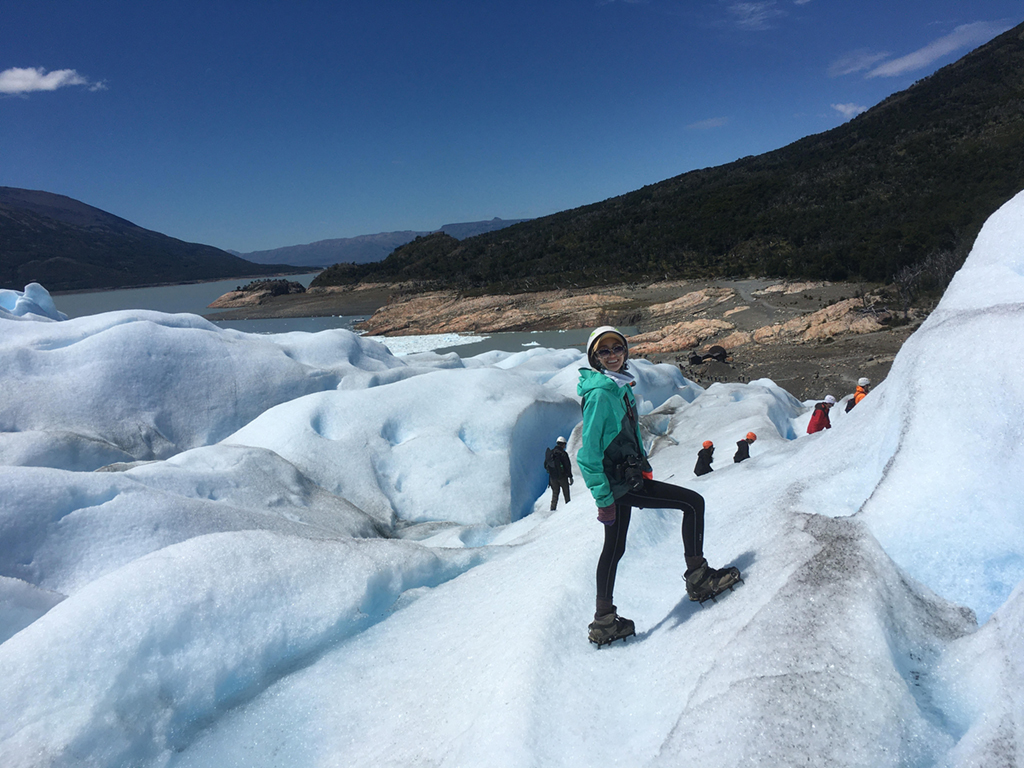
Dr. Chelsea Parker on the Perito Moreno Glacier in Santa Cruz Province, Argentina, in 2019, located in Los Glaciares National Park – a UNESCO World Heritage site. Photo courtesy of Chelsea Parker.
To honor and celebrate Women's History Month, this story focuses on the unique journey of one of NASA Goddard Space Flight Center’s most versatile, adventurous, high-energy, and hard-working research scientists, Dr. Chelsea Parker – in her own words.
Hometown: I was born and raised in London, United Kingdom, until I moved to the United States.
Career Path to NASA: I grew up wanting to be a marine biologist and went scuba diving for the first time when I was 12 years old. Over time, that evolved into wanting to be an oceanographer because of my interest in geography and larger-scale processes on the Earth.
For my undergraduate degree, I attended the University of Bristol to study physical geography, which is similar to Earth science programs in the United States. My undergraduate studies gave me a broad background and understanding of the Earth system, its components, and how they interact.
For my undergraduate dissertation at Bristol, I used an Earth system model of intermediate complexity to project changes to ocean temperature and chemistry with climate change and how those changes would affect cold water reef environments. Conducting my own novel research was the highlight of my undergraduate degree and set the wheels in motion for me to pursue graduate degrees in the future.
I took a year off to travel and worked as a research assistant on a marine conservation project in the nation of Fiji in the south Pacific, where we conducted daily coral reef surveys for the Fiji Marine Conservation Project through The Society for Environmental Exploration, U.K., thus contributing to a long-term database that helps researchers assess changes to these habitats over time.
After working in Fiji, I then applied to graduate schools in the United States and started a master’s program for Earth and environmental science at Brown University in Providence, Rhode Island.
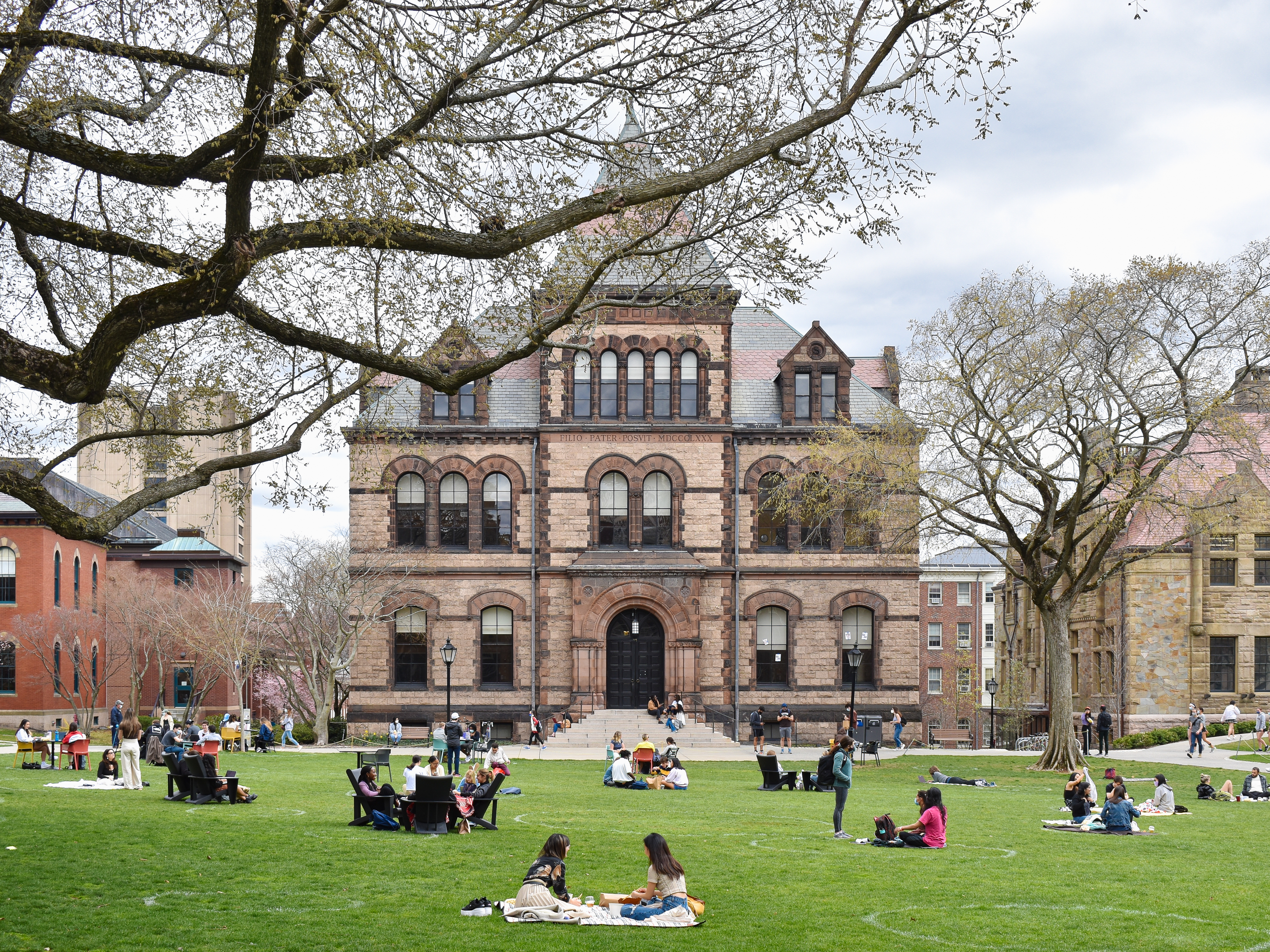
East-facing view of Sayles Hall and the Main Green on the campus of Brown University in Providence, Rhode Island. Sayles Hall was designed by Alpheus C. Morse and built in 1881 in the Richardsonian Romanesque style. The building is flanked by the Salomon Center for Teaching (1862) on the left and Friedman Hall (1891) on the right. Photo by Filetime, (CC0 1.0), via Wikimedia.
I had originally intended to be in graduate school in the U.S. for the two-year program and then return home to the U.K. However, I had the opportunity to extend my graduate research into a doctoral degree. I stayed on to complete my Ph.D. in Earth, Environmental, and Planetary Sciences at Brown, where I used climate projections, numerical weather modeling, and remote sensing data to investigate the response of tropical cyclones (hurricanes) to climate change and their effect on the Great Barrier Reef on the northeast coast of Australia.
[Editor’s note: The Great Barrier Reef, another World Heritage Area, “contains the world’s largest collection of coral reefs, with 400 types of coral, 1,500 species of fish, and 4,000 types of mollusks,” according to UNESCO.]
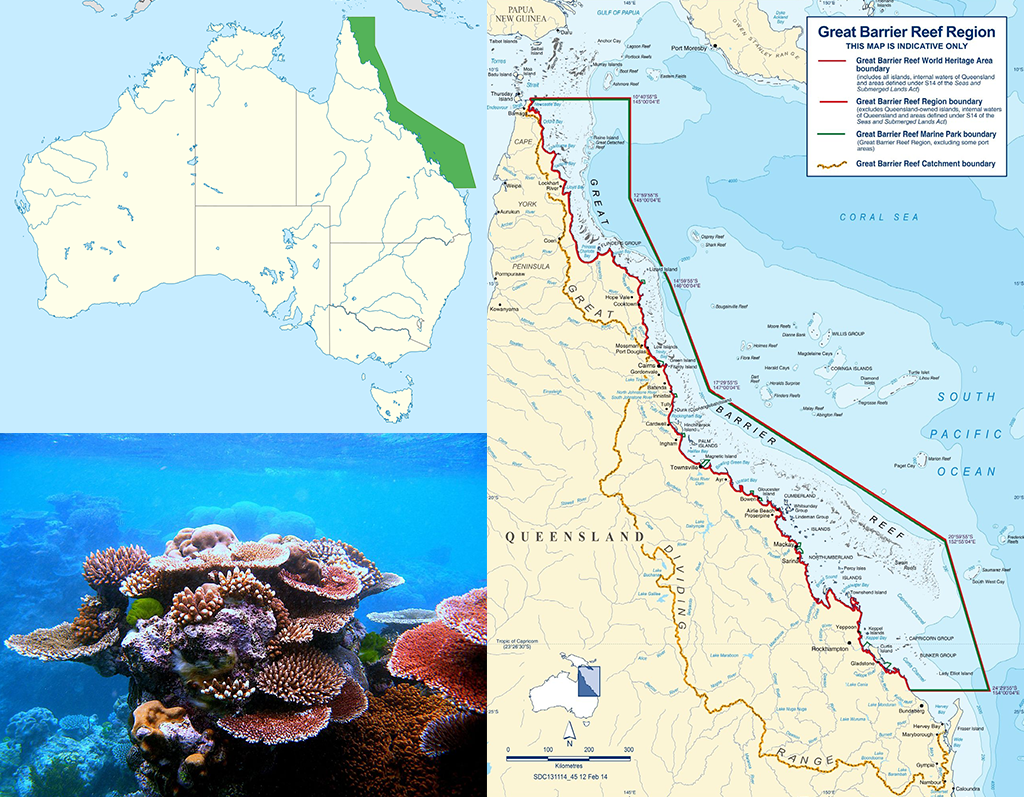
Above, clockwise from top left: Locator map for the Great Barrier Reef Marine Park in Australia, a simplified representation showing the extent of the protected area. Map by NeoGeneric, CC BY-SA 4.0. Boundary map of the Great Barrier Reef Region, World Heritage Area, and Marine Park boundaries, 2014. Map by Toby Hudson, CC BY-SA 3.0. Underwater photograph of a variety of corals form an outcrop on Flynn Reef, part of the Great Barrier Reef near Cairns, Queensland, Australia. Photo by Toby Hudson, CC BY-SA 3.0. All graphics via Wikimedia.
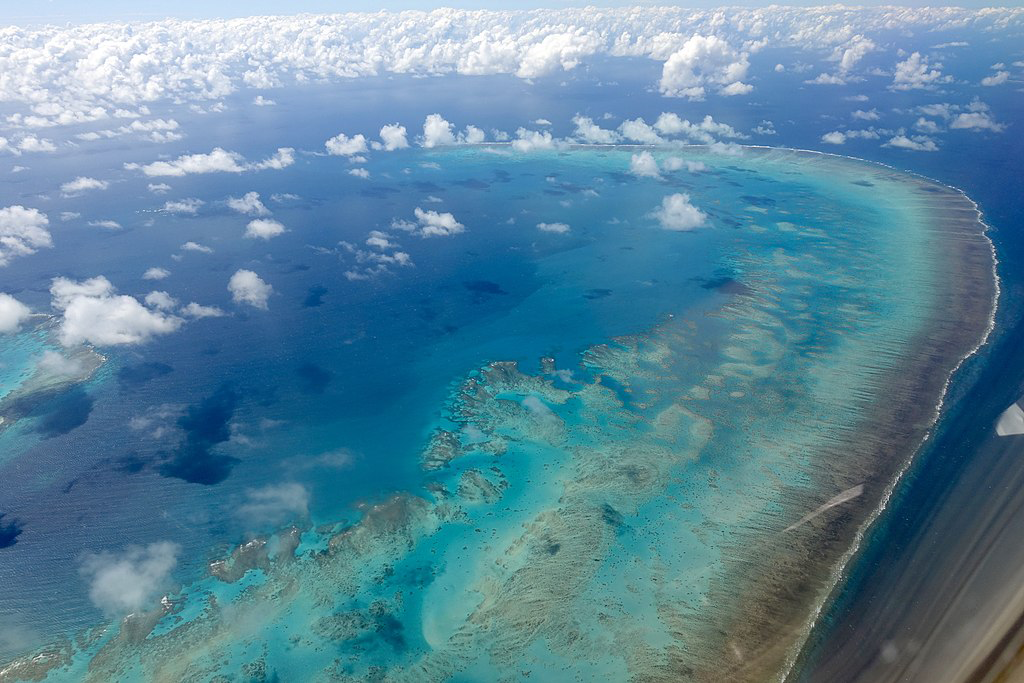
Aerial view, facing east, of Arlington Reef in Queensland, Australia. The reef is part of the Great Barrier Reef and is located in the Coral Sea. Photo by Luka Peternel, CC BY-SA 4.0, via Wikimedia.
Current Role: I am a research scientist, collaborating with NASA’s Cryospheric Sciences Laboratory, primarily working on new research and analysis to further our understanding of Earth processes and how these might change in the future. I also contribute some expertise to planning and design of NASA climate modeling efforts, airborne campaigns, and satellite missions. My work brings together in situ and remote Earth observations, climate data, and modeling techniques to learn about our planet’s polar regions.
Current Research: My research is about understanding the polar atmosphere and how it relates to ice over the ocean and land. On one end of the scale, I use data and regional numerical models to understand interactions between sea ice and the atmosphere during polar weather events. On the broader end of the scale, I work on improving the representation of polar processes in NASA global models.
How did your team leverage NASA’s supercomputers for your recently published paper on Arctic cyclones? We used a suite of high-resolution (4-kilometer, horizontal grid spacing), regional weather modeling and downscaled climate reconstructions and projections to explore the influence of past and future climate change on Arctic cyclone characteristics. The high-performance computing resources of the NASA Center for Climate Simulation (NCCS) were used to carry out the simulations and analyses. (See the figure and “Related Links” below to learn more about Parker’s research and Arctic cyclones.)

The calculated difference in March sea ice concentration, surface temperature, and temperature and relative humidity at 700 hectopascals (higher in the atmosphere) for the average current (1985–2014) climate, minus the average historical (1886–1915) climate left column) and the average future (2070–2100) climate, minus the average current climate (right column). The simulated tracks of cyclones A–C in the current climate are overlain. Markers show the end of the trajectories. Figure from Parker et al., 2022.
Inspiration: Women who were the pioneers in computer science, engineering, fieldwork, and expedition science are a constant source of inspiration. My current close colleagues are also a source of inspiration and spur me on with my research and career. They are so passionate about their work and dedicated to furthering scientific understanding and unwavering in their support of my career. As a new parent, I particularly notice women who have managed to juggle their career aspirations and goals with family life.

What would you like to say to young people who are thinking about a career in science? Science is all around us in our everyday lives and in the world around us. It isn’t always mystical and abstract. You can start simple and pursue an understanding of how something or somewhere that you like works. It is worth trying to find something you are really passionate about, and there is likely an opportunity to develop a career in it.
Skills are transferable. The skills and understanding you get from pursuing science can be applied to many other careers and aspects of your life.
I was able to successfully shift my research from tropical weather and ecosystems to polar regions studying the atmosphere and ice. Don’t be afraid to change fields or focus areas, because a science foundation is versatile and will enable you to change your immediate subject matter.
Are there any research experiences that have influenced your current work or your future plans? Good mentoring and positive experiences during my undergraduate research work gave me the inspiration and motivation to pursue research science.
Exposure to varied fieldwork from high school and throughout my university career paved the way for my interest in Earth science as well as being interested in multiple climates and landscapes.
During my Ph.D., I was lucky enough to work as a scientist at the National Center for Atmospheric Research (NCAR) in Boulder, Colorado. I gained invaluable computational and modeling skills there, and the mentorship of the team really helped me through my academic career.
All of these experiences have led me to where I am today and influence my future plans to continue with research science and weather and climate modeling.
Career Challenges: Moving to a new country for my graduate career was much more challenging than I imagined. Constantly feeling out of place and missing my friends, family, and culture while also tackling graduate school was not a smooth road for me. I don’t think it’s something one fully overcomes, but finding a support network of friends and continuing hobbies that were important to my identity helped me.
In terms of my Ph.D. research topic and methods, I was isolated in my institutional department. This made it very challenging to make progress. I was able to overcome this challenge by finding appropriate collaborators and mentors at NCAR.
Juggling career goals with my personal life and my family’s needs has not been simple. It is not something that can easily be solved or overcome, but compromise and figuring out manageable goals and expectations has been key.
Below: Dr. Linette Boisvert, then-Deputy Project Scientist for NASA’s Operation IceBridge (airborne mission) on the tarmac during the last-ever IceBridge campaign out of Hobart, Australia, waiting to embark and fly a transit over parts of eastern Antarctica to collect cryospheric data. Photo by The Mercury newspaper, Hobart.

Another view: To get another perspective on Dr. Chelsea Parker, we interviewed Dr. Linette Boisvert, a Sea Ice Scientist, Deputy Project Scientist for NASA's Aqua (Earth observing satellite) mission, as well as Assistant Lab Chief for the Cryospheric Sciences Lab at NASA Goddard. Boisvert is also an Adjunct Faculty member at the Department of Atmospheric and Oceanic Sciences (AOSC), University of Maryland, College Park.
“I work closely with Dr. Chelsea Parker on several projects, and we advise three graduate students together,” Boisvert explained. “Chelsea never ceases to amaze me with how well she is able to handle her own workload, the extra time and effort involved with advising, and also being a mom to a young child. It takes someone with great discipline and drive to balance all of these efforts!”
“She is always willing to help out on a project, and gives everything she does her all. Chelsea is an extremely hard-working scientist and always has novel ideas for new projects, such as how changing sea ice is affecting Arctic cyclones, compared to the most common approach of how cyclones affect sea ice.”
“Although she may be small,” Boisvert emphasized, “she is mighty!”
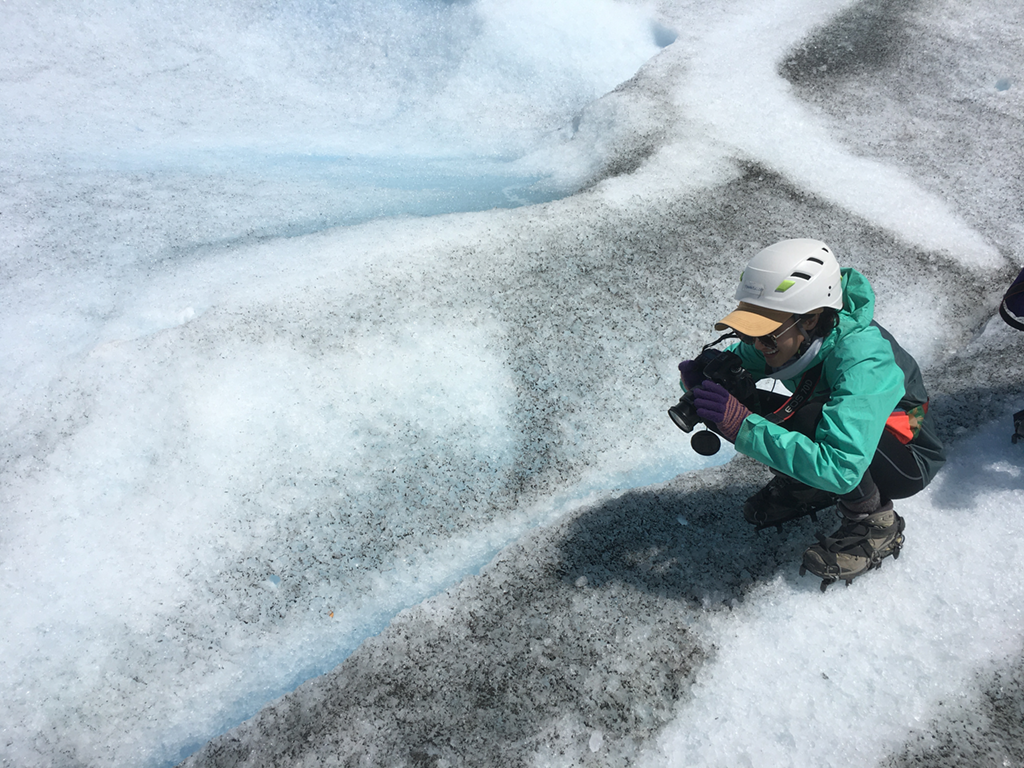
Parker taking in situ data and photographs of surface melt on the Perito Moreno Glacier, Argentina, in 2019. Photo courtesy of Chelsea Parker.
RELATED LINKS
- Parker, C.L., P.A. Mooney, and M.A. Webster, 2022: The Influence of Recent and Future Climate Change on Spring Arctic Cyclones. Nature Communications, 13, doi:10.1038/s41467-022-34126-7.
- NASA Earth Observatory: Arctic Cyclones to Intensify as Climate Warms.
- Earth Expeditions: CORAL Mission Probes the Great Barrier Reef.
Sean Keefe, NASA Goddard Space Flight Center
March 14, 2023


